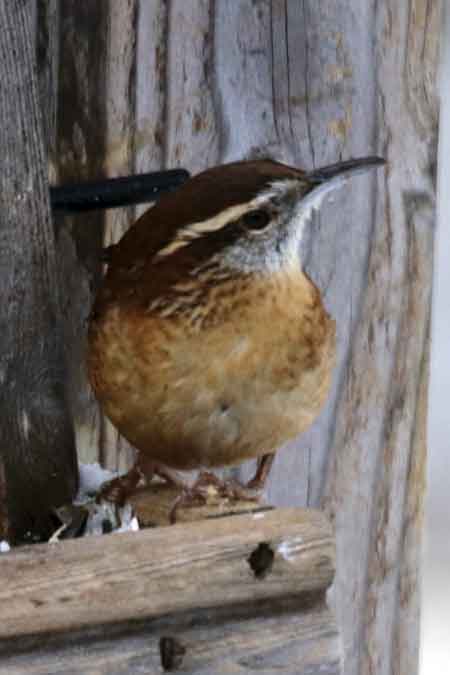GORE BAY—The 55th Gore Bay Christmas Bird Count, the third of the COVID-19 pandemic, was held on Sunday, December 18, 2022.
Just before 8 am, 12 field team members making up six teams picked up their report form packages from the plastic container at the end of the (Terry and Judy) Land’s driveway in Gore Bay and set off to hunt within our 24-kilometre circle, to list every species seen and to count every individual bird.
Like last year, in many ways the weather conditions were ideal for a successful count. The morning temperature hovered around -4° Celsius with light winds. Visibility was clear with broken clouds mixed with intermittent sunshine. The snow on the ground varied from almost none to no more than 20 centimetres in drifted areas. Through the North Channel, Lake Wolsey and Gore Bay were open while the inland lakes were mostly frozen. Initially the water was calm enough to be making ice but as the wind picked up, there was little to bother the ducks.
As the day progressed, the temperature rose to 0° Celsius in most areas.
Between 3:30 and 4:30 pm, the field teams returned to place the reports of their efforts into the container. Meanwhile Judy Land was coordinating the various reports from the 31 feeder watchers as they came in by telephone or email. The feeder watcher reports were an essential component in an accurate tally of all the potential species and individual birds. I thank all of them for participating and look forward to their contribution again next year.
When the information was analysed, the 55th Gore Bay Christmas Bird Count resulted in 47 species of birds, with the total number of birds totalling 4,213. This may not be the way it is summarized on a pdf report form because the number shown there had to be reduced by one because the Gore Bay count distinguishes between adult and juvenile bald eagles though, combined, they represent only one species.
I am not aware of any count week birds showing up on the three days before and after the count which did not appear on the actual count day.
With the open waters within the count circle, there were two Canada geese, one of which was healthy and one of which was not. In addition to the six red-necked grebes which appeared in Gore Bay, there were seven species of ducks. Common goldeneye (774 individuals) and common mergansers (730 individuals) constituted the top two species of all birds seen. Not far behind were 667 herring gulls and the ever-popular black-capped chickadees coming in at 425 individuals.
Other sightings of interest were one belted kingfisher hanging around Bickell’s Creek, a very unusual Carolina wren which showed up late in the afternoon at the Land’s feeder, a Sandhill crane spotted on the Noland Flats in Evansville and a northern flicker in the Ice Lake area. One field team also noted a great black-backed gull.
The result of 47 species seems to fall within the average of recent years but the total must be considered in perspective.
Of concern with this total is the fact that, if the North Channel and Lake Wolsey had been frozen, most of the duck species would very likely have been gone. At least 15 species were counted that had six or fewer birds. That could easily have had a significant impact on the count results.
As compiler of the count, I wish to thank my spouse Judy who manned the phones and coordinated the response from the feeder watchers while watching out for birds. I also wish to thank the field team observers and all the feeder watchers for their enthusiasm in taking part this year. I particularly wish to thank spreadsheet savant Bruce Lindsay of Gore Bay for his invaluable help in creating the tally programs and related work in creating the forms used in the field.
Thank you everyone. Happy New Year and have a great year of birding.
The following is a list of birds counted during the annual bird count: Canada goose, two; American black duck, four; mallard, 94; bufflehead, 79; common goldeneye, 744; hooded merganser, 67; common merganser, 730; red-breasted merganser, 15; ruffed grouse, six; sharp-tailed grouse, 27; red-necked grebe, six; bald eagle (juvenile), 19; bald eagle (adult), 18; rough-legged hawk, three; ring-billed gull, five; herring gull, 667; great black-backed gull, one; rock pigeon (feral pigeon), 50; mourning dove, 96; belted kingfisher, one; red-bellied woodpecker, 22; downy woodpecker, 37; hairy woodpecker, 45; northern flicker (yellow-shafted), one; pileated woodpecker, seven; northern shrike, two; gray jay, four; blue jay, 113; American crow, 161; common raven, 139; horned lark, 16; black-capped chickadee, 425; red-breasted nuthatch, 25; white-breasted nuthatch, 38; European starling, 191; bohemian waxwing, 12; snow bunting, 83; American tree sparrow, nine; dark-eyed junco (slate covered), two; northern cardinal, 13; brown-headed cowbird, one; pine grosbeak, 43; Carolina wren, one; pine siskin, 25; American goldfinch, 99; evening grosbeak, 37; house sparrow, 28; and Sandhill crane, one.
